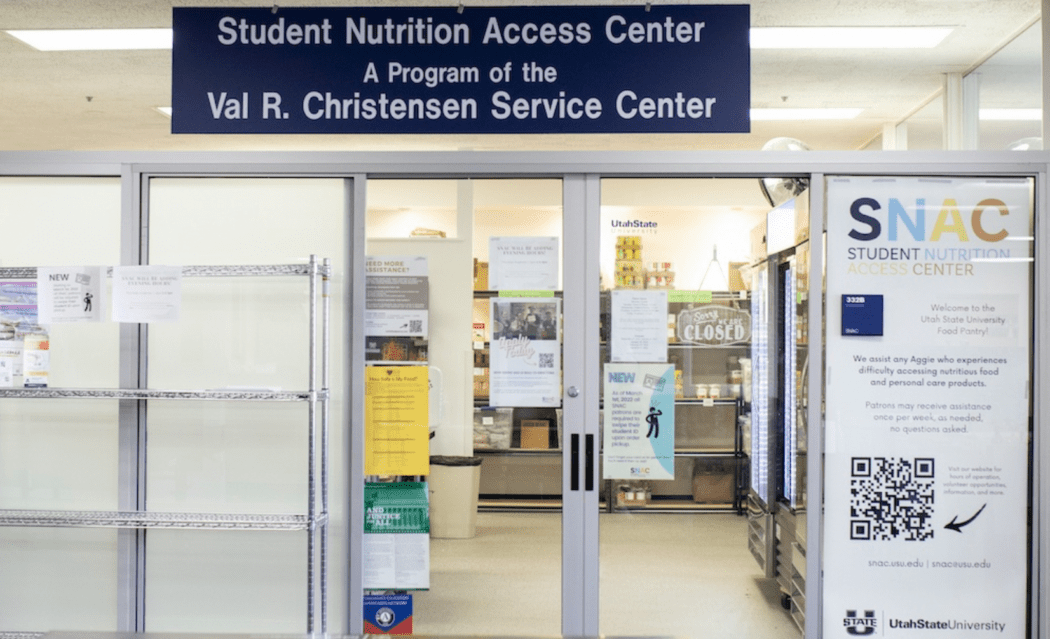Food additives, social media and accessibility
Editor’s note: This piece was orignially written for a feature writing class.
For Utah State University student Karina Ramirez, what’s in her food isn’t always her biggest concern — unless it contains Red 40.
“I’ll look at the ingredients if I’m looking at candy to see if there is Red 40 or something in it,” Ramirez said.
She is worried Red 40, an artificial food coloring often found in food items to enhance their appearance, might negatively impact her health.
“I’ve heard a lot of things about it being bad for you,” Ramirez said.
As a result, she’s tried to avoid the red additive. Many students, including roommates I have had while in college, often opt for easy-to-get foods, like candy and ramen, but Ramirez is wary after what happened the last time food additives were a large part of her diet.
“I used to eat Eggo waffles every day, but that hurt my stomach a lot,” Ramirez said.
For her, avoiding things like Red 40 and Eggo waffles has become a health priority. Ramirez said once she began eating more fruits and vegetables, she began to feel better. Immediately, I had a question: Was it the food additives that were causing Ramirez to feel sick?
To get that question answered, I spoke with food science student Andrea Knowlton, who thinks there is more to the story.
Generally, food additives are part of a broad group of ingredients that are added to a food item to enhance its appearance or shelf life. Ramirez avoids certain foods because they make her sick, but Knowlton thinks some people are scrutinizing and avoiding ingredients because of outside sources.
To her, the reason they’ve faced scrutiny recently isn’t about how many there are or how they affect people’s diets but about what people are seeing about them on social media.
“Social media plays a huge influence on what people eat and also the information we receive when we say food additives,” Knowlton said.
Knowlton thinks the use of social media is causing more people to excessively worry about what’s in their food. When it comes to how additives are portrayed online, she said it has a lot to do with creating fear — especially surrounding additives like Red 40.
“Some people can use it as a fearmongering term,” Knowlton said. “As a food science student myself, it’s kind of a weird thing. It’s just a term that can mean anything, really.”
From adding coloring in candy to putting salt in a brownie recipe, Knowlton said the range of what is and isn’t an additive varies greatly. To her, they’re not a new topic of concern.
“Food additives and people adding weird things to your food has been a topic of conversation for a lot longer than just now,” Knowlton said. “It’s just shared a lot more.”
She suggests that people are focusing more on what they hear online than what they are experiencing in their bodies. Knowlton thinks the real issue isn’t about food additives but how much of them people are eating.
“I think more of an issue of food is overconsumption or sometimes how the food is processed,” said Knowlton. “We can overconsume so easily.”
Knowlton believes the reason some people might experience discomfort after eating can come from the amount of food they consume rather than what it is. Knowlton claims that when people eat more processed foods, they aren’t getting as many nutrients as they need so they eat more food to make up for it–resulting in overconsumption.
She also thinks food accessibility plays a role, especially for college students.
“If you can’t get fresh fruits and vegetables, you’re going to eat what you can get,” Knowlton said.
Knowlton said if students could get access to foods that contain more nutrients, like fruits and vegetables, they would be less inclined to eat high volumes of processed foods. However, not everyone can afford or access healthier options.
“That’s why I really love SNAC,” Knowlton said.
What Knowlton is talking about is the USU Student Nutrition Access Center, known on campus as SNAC. The purpose of the program is to provide food and information for students who have monetary or other impediments that stop them from getting the proper nutrition.
Knowlton likes utilizing SNAC as a resource for information about what she’s eating, and she said programs like SNAC can help students like Ramierez tune in to their bodies and make informed decisions about what’s right for them.
Between busy schedules, monetary burdens and limited access to healthy food options, Knowlton thinks the best way to fight food-related health problems comes down to ignoring what you see online and knowing who you are.
“You really have to figure out what’s good for you and what affects you in the right way,” Knowlton said.
With help from the SNAC and a new perspective on social media, she hopes students will be able to make educated decisions about what they eat. She reminds students that there isn’t one right answer.
Whether you choose to avoid Red 40, it’s about what’s right for you.
“It’s very much a personal choice,” Knowlton said.

